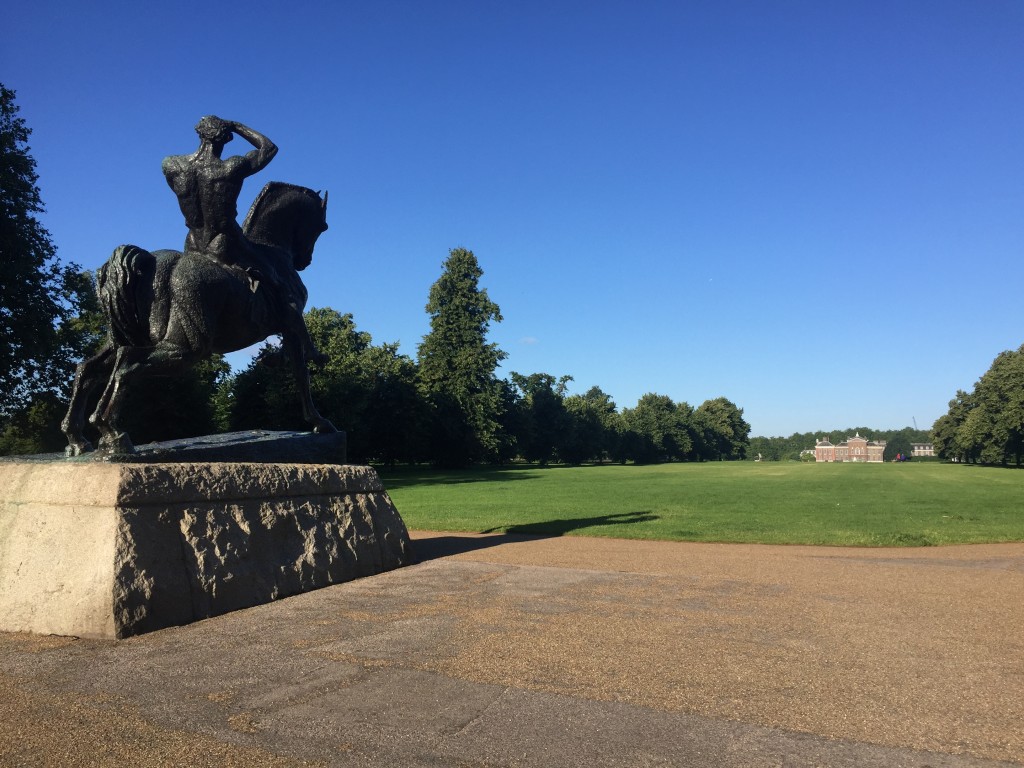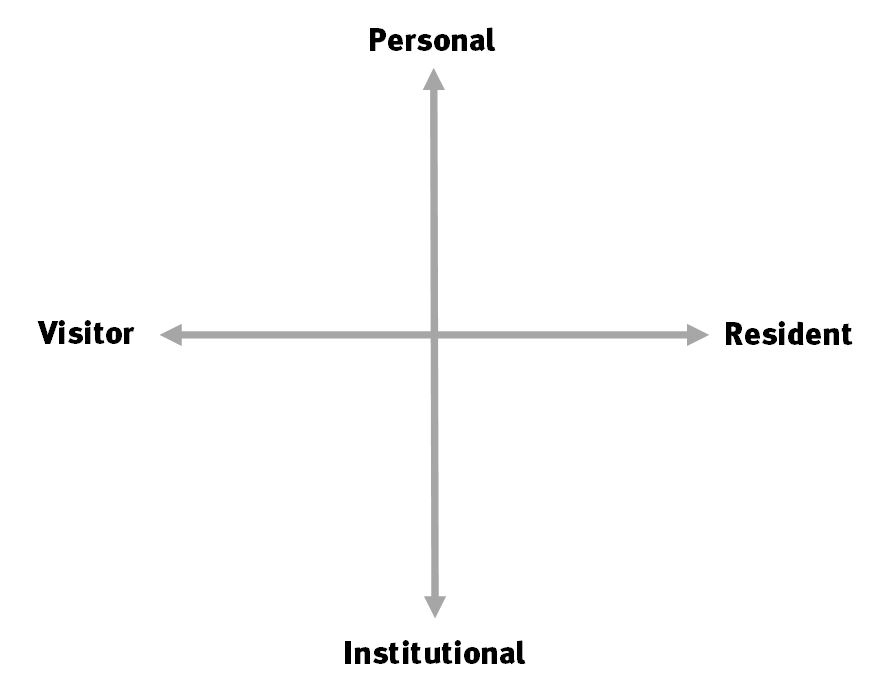In July I attended the 60th annual Business Librarian’s Association conference at Imperial College London. Unlike last year’s annual conference in Liverpool where we stayed in the dizzying heights of the Liverpool Hilton, this year we found out how Imperial College students live in the student accommodation. The answer? Small, but really close to Hyde Park and the many other delights of Albertopolois—it’s a thing. Among those delights was the Natural History Museum, which hosted the gala dinner.
This is a photo I took before the second day while I enjoyed a leisurely jog past Kensington Palace.
The theme of the conference was ‘the developing business information landscape’. Many of the talks circled around similar ideas, three of which I thought were particularly pertinent for us.
- Being more personal online shows your users that an organisation is run by humans, not robots, and helps you to engage with them on a personal level, rather than transactions. Using humour on Twitter engages students.
David White, Head of Technology Enhanced Learning at University of the Arts London, delivered the first keynote speech, in which he responded to the concept of Digital Natives with a theory that we all inhabit online spaces on a spectrum from Visiting on one end to Resident on the other. White argued that whether you’re digital native-age or otherwise, when you’re in an unfamiliar space online, you go into visitor mode, and when you live out part of your life in an online space, for instance your email inbox, you go into resident mode. He added onto this x-axis spectrum a y-axis of Personal and Institutional (personal/work or personal/educational for students). In his workshops, the Jisc Digital Leaders Programme, he has his audience plot their online spaces onto this graph. For me seeing my own and then seeing others’ really helped me to understand where and how we position our messages to engage with our users more effectively.
This is a graph I drew to represent the graph from David White’s Visitors & Residents theory. It is blank, but you can map your own spaces.
White argued that when we seek to engage users without giving them a context of who we are and what we do, we set ourselves up to fail. Instead, if we give users some context in which to engage – the people our staff are, users will feel more comfortable asking questions and engaging with the space online, which for many is synonymous with our identity.
Sarah Roughley of University of Liverpool, presented a members sharing paper which demonstrated this personalised approach to Social Media in action. The University of Liverpool Library’s Twitter account boasts 7.3K+ followers. They use Twitter to engage mostly with students and current staff using humour to get students’ attention as well as to diffuse complaints. Instagram and Spotify are also used to engage with current students – Instagram being used for competitions and Spotify, they hope to link to collections in the future. Liverpool’s use of Facebook is more serious with longer posts and a rule that all posts must contain an image or a video. Most of their followers on Facebook are alumni, including international alumni. According to Roughley, they have successfully engaged users due to:
- A large, cross-library team (12 people )who are responsible for posting to the same feeds
- Fortnightly meetings; even if they don’t have a formal agenda, they still meet so that they can generate ideas for things to post
- Top down support – their Social Media practice comes down from the University’s marketing department, which does not impose a policy about what they can and can’t post
- No rota for posting
- They balance humourous post with serious posts.
For more information, Roughley along with her colleague Zelda Chatten have published an article on this topic in the New Review of Academic Librarianship: http://www.tandfonline.com/doi/full/10.1080/13614533.2016.1152985.
- Many university libraries are moving away from the Subject Librarian model to separate roles for liaison and separate roles for instruction. While many speakers mentioned this change, the following two members sharing papers addressed it directly.
First time conference attendee, Catherine Batson, Faculty Engagement Librarian from the University of Surrey, talked about her experience of the library undergoing a change from 8 Subject Librarians across faculties to one liaison librarian and one information skills librarian per faculty. Batson is now the liaison for the entire faculty of Arts & Social Sciences, meaning she supports business as well as many other schools, including Arts, sociology, English and languages. For Surrey, dividing up work between liaison and instruction enabled Information Skills Librarian to update Webpages, stay up to date on their subject specialism, do instruction and work on projects developing learning development. Faculty Engagement Librarians do collection development, work with business partners and support academics, improve user experience, work on special projects, do scholarly communications, as well as detailed level analytics of e-resources usage.
Natalie Bedford, who worked on the Flying start at the University of Leeds as an Instruction librarian) reiterated from the instruction side that this set up enables librarians to take on more projects. Indeed, instruction at the University of Leeds has expanded from traditional Information Literacy training to complement other student experiences around the university, including giving presentations, academic reading and writing, and time management skills.
Some of the drawbacks to this model are that it becomes less clear who to contact. Also, if City took up the model at Leeds and delivered learning skills training, like time management and academic writing, this could overlap with some of the instruction delivered by Student Services.
- Three tools and tricks for teaching IL
Heather Lincoln and Rosemary Russell from Imperial College shared their experiences getting Imperial students to bookmark the Business section of the library website on their own smartphones or laptops as a teaching activity in an induction. They had previously done this with the students after they had been given an iPad, but in the last academic year, Imperial Business School stopped giving their MBA students iPads, necessitating this change. The result was that fewer students brought their laptops or tablets into the classroom, and while all students most likely had mobile phones with them, they didn’t take them out for the task. MSc students were more likely to engage with the activity than MBA students. While it didn’t work so well in inductions, it could work better in a traditional classroom.
As part of the University of Leeds Flying Start programme, Natalie Bedford used Lego with first year students to teach them about plagiarism and referencing. She asked the students to take Lego bricks from different bins to build animals. Then she held up an animal and asked the student which bins the bricks had been taken out of. If the student couldn’t tell her, then she would break the Lego animal apart, showing the importance of identifying where ideas come from.
Jamie Halsted et al., discussed the needs of pre-sessional Chinese students at Middlesex University where they run classes for Chinese students to bridge the gap between A-level studies and Higher Education, aimed at improving English, developing study skills and introducing the students to UK and academic culture. These students are far less likely to speak up in class, and instead ask after, leading to ‘ask queues’. Halstead’s colleague Anne Chatterton, Pre-sessional Academic Manager, argued that when teaching this cohort, the onus is on the teacher, not the students to ensure the message gets across. She engaged students by giving them post-it notes at the beginning and asking them to write down any questions they had during the session, making them anonymous. Pre-sessional Librarian, Monna Rizvi, harnessed tools Chinese students will already be familiar with, like competitions, to engage them in games and team quizzes.
At the end of the conference the chair of BLA, Keith Walker, officially stepped down as his term had ended. Alasdair Stewart of Stirling University took his place. Alasdair has previously served the committee as Supplier Liaison Officer (working with suppliers who sponsor the conference). This being the diamond anniversary and the first time the conference has been held in London in any current member’s memory, it felt like a significant year to attend the event, and I for one will remember it fondly.

